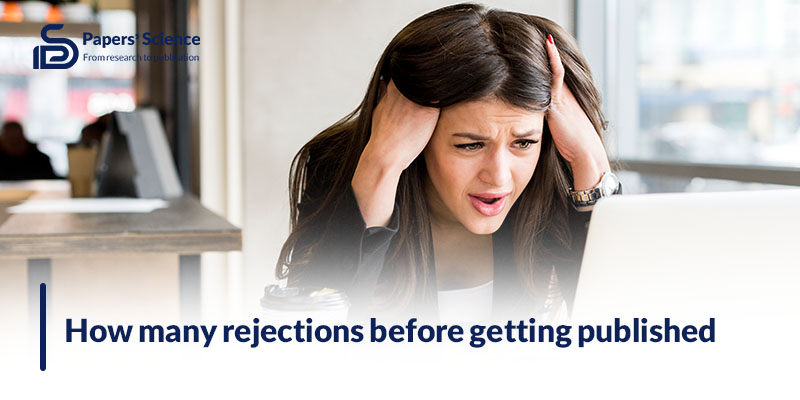How many rejections before getting published?

Having a research article published is a major milestone for any academic. The process of getting your work published, however, may be tedious and time-consuming.
For scientists, “how many rejections before getting published?” is one of the most often Googled topics.
Because of the importance and frequently asked question of this topic, we decided to talk more about it in this essay, and we’ll delve into the reasoning for this curiosity and provide advice on how to position yourself for publication better.
Are you ready to dive into details? Let’s get started!
How Many Rejections Before Getting Published?
Well, from the first, we should say that answering the “how many rejections before getting published?” question isn’t exactly simple.
The number of rejections a paper gets before it finally gets published can vary a lot, and it depends on a bunch of things that you can learn below:
· How good the research is, and how relevant the topic is.
· What kind of journal you’re aiming for?
· How many other people are trying to get published in the same field?
Did you know that in a big scientific publishing company, most papers go through about 2-3 rounds of submission before they get accepted?
Just thought that was interesting! Researchers should be prepared to get one or two rejections before accepting their paper.
So, this is just an average. Some papers need more submissions before they get accepted.
Also, just because a paper gets rejected doesn’t mean the research is bad. Sometimes, papers get rejected for reasons that don’t have anything to do with how good the research is.
It could be because the paper didn’t match the journal’s focus or too many other papers were being submitted simultaneously.

How many rejections before publication are normal for an inexperienced researcher?
Given the wide variation in study areas, paper quality, and target journals, it is impossible to provide a definitive number of rejections regarded as “normal” for a beginning researcher before publication. However, new researchers sometimes face several rejections before their work is finally accepted for publication.
For first-time researchers, it’s better to concentrate on increasing the quality of their study and submitting it according to the journal’s criteria and instructions than on the number of rejections they get.
The quality of the research article and its potential for publication might be enhanced by soliciting input from peers or mentors.
Remember that it may take more than one try to break into the publishing industry, but hard work and determination are essential. Do not stop your investigation; aim to learn more and develop and decrease the number of rejections before publication.
What are the ways to increase publication prospects?

There’s no 100% guarantee of getting published without rejection, but you can take steps to improve your odds. Some advice is as follows:
Pick the Right Journal
Choosing the correct magazine is crucial to publishing. Choose a journal with a solid reputation and relevance to your study. By selecting the correct journal, you enhance acceptance chances.
Follow the Guidelines
Read and follow the journal’s submission criteria before submitting your work. This guarantees that your work fits all standards and simplifies the editor’s job, enhancing your approval chances.
Be Brief
Be straightforward and concise while drafting your paper. Use straightforward language and a little jargon. Structure your article carefully and make it simple to read. A brief paper is more likely to get approved.
Get feedback
Ask colleagues or advisers for input before submitting your work. They can assess your research’s quality and usefulness. Additionally, they may assist you in detecting paper problems and offer improvements.
Have patience
Being patient is crucial throughout the lengthy and unpleasant publication process. Do not despair if your article is rejected. Instead, utilize comments to enhance your article. Please submit your manuscript to many publications until it is accepted.
Never Give Up
Finally, persevere. Rejections are normal in publishing. Continue researching and submitting your manuscript to journals. Your paper will be published when you discover the proper match.
Read More: How to describe a graph in research paper?
Conclusion
The path to publication might be difficult and discouraging, but the number of rejections before publication is not fixed in stone. It relies on your labor, perseverance, and luck and varies widely from writer to writer.
Maintaining your writing abilities, getting criticism, and overcoming rejection are essential. Strong skin and a good mindset might be as crucial as writing skills. Remember that famous writers were rejected early on.
No amount of rejections assures publication. Your desire, improved dedication, and work ethic matter most.
Keep submitting, writing, and pushing ahead because your writing experience is unique. Your effort and tenacity may determine your publication.
So, what is your idea about “how many rejections before getting published?”

What is your experience with publishing research papers? Share all your data with us in the comment section.



